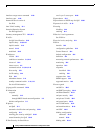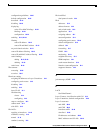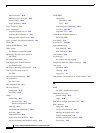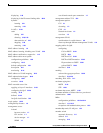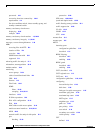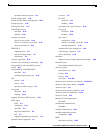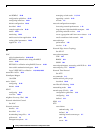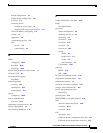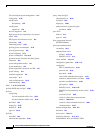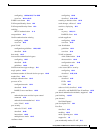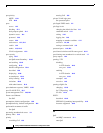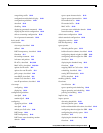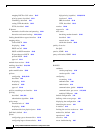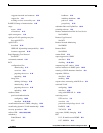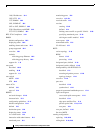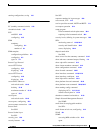
Index
IN-24
Catalyst 2960 and 2960-S Switch Software Configuration Guide
OL-8603-09
Cisco intelligent power management 12-5
configuring 12-30
cutoff power
determining 12-8
cutoff-power
support for 12-8
devices supported 12-5
high-power devices operating in low-power
mode
12-6
IEEE power classification levels 12-6
monitoring 12-8
monitoring power 12-33
policing power consumption 12-33
policing power usage 12-8
power budgeting 12-31
power consumption 12-9, 12-31
powered-device detection and initial power
allocation
12-6
power management modes 12-7
power monitoring 12-8
power negotiation extensions to CDP 12-5
power sensing 12-8
standards supported 12-5
static mode 12-7
total available power 12-10
troubleshooting 38-13
PoE+ 1-15, 12-5, 12-6, 12-30
policed-DSCP map for QoS 33-63
policers
configuring
for each matched traffic class 33-53
for more than one traffic class 33-58
described 33-4
displaying 33-79
number of 33-39
types of 33-10
policing
described 33-4
token-bucket algorithm 33-10
policy maps for QoS
characteristics of 33-53
described 33-8
displaying 33-80
nonhierarchical on physical ports
described 33-10
port ACLs
defined 31-2
types of 31-3
Port Aggregation Protocol
See EtherChannel
port-based authentication
accounting 10-17
authentication server
defined 10-3, 11-2
RADIUS server 10-3
client, defined 10-3, 11-2
configuration guidelines 10-38, 11-9
configuring
802.1x authentication 10-44
guest VLAN 10-54
host mode 10-46
inaccessible authentication bypass 10-57
manual re-authentication of a client 10-49
periodic re-authentication 10-48
quiet period 10-49
RADIUS server 10-46, 11-13
RADIUS server parameters on the switch 10-45,
11-11
restricted VLAN 10-55
switch-to-client frame-retransmission
number
10-50, 10-51
switch-to-client retransmission time 10-50
violation modes 10-43
default configuration 10-37, 11-9
described 10-1
device roles 10-3, 11-2
displaying statistics 10-71, 11-17
downloadable ACLs and redirect URLs



